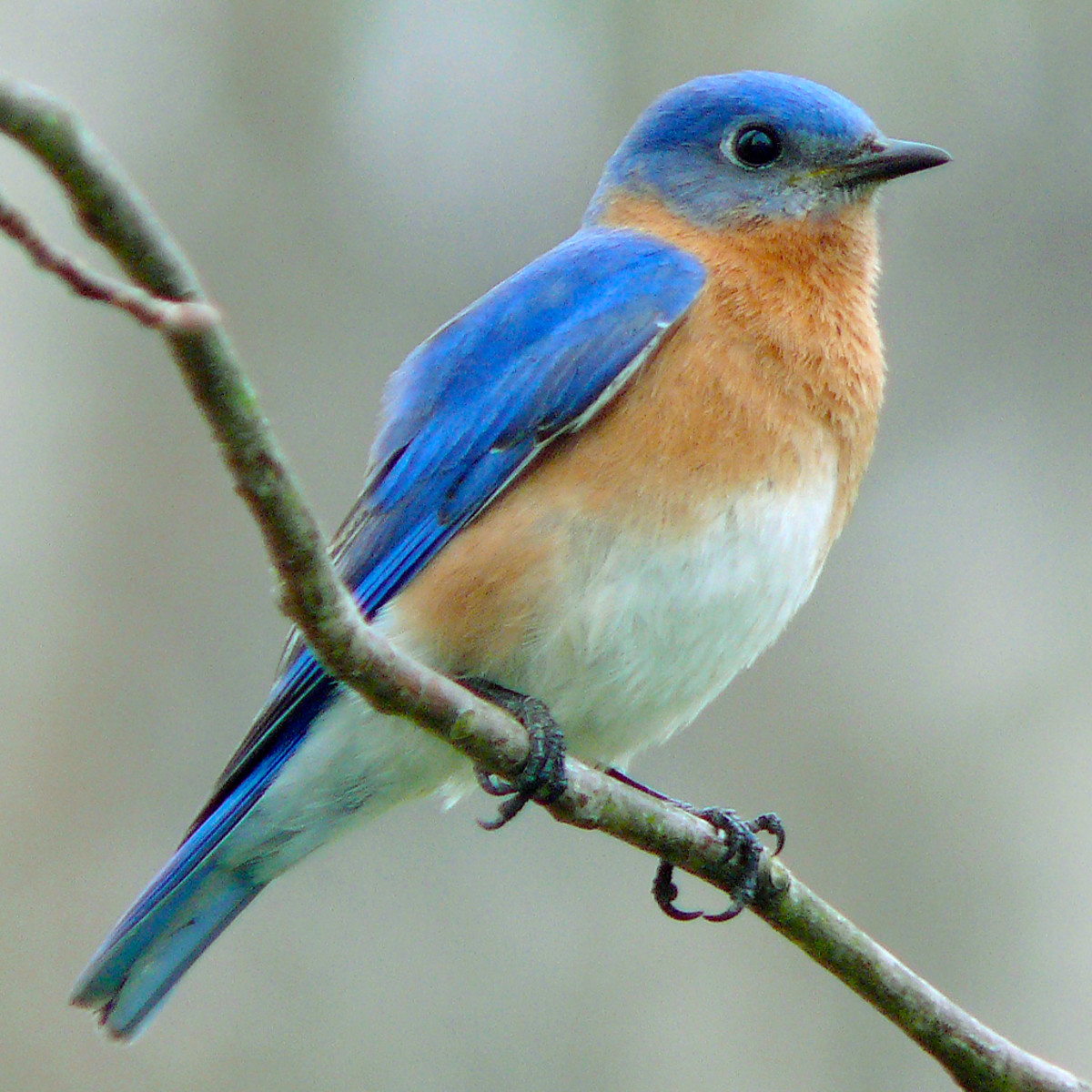From the Field: Bluebird Trail

By Pam Torlina, Southeast Stewardship Manager
Information gathered through the NC Bird Atlas will provide data that will help state wildlife officials, land managers, and conservation organizations make important conservation decisions about how to better preserve bird habitat. But in the meantime, Atlasers are making important observations and taking actions now that support our avian residents and visitors.
This spring, Polk County Atlaser, Cheryl Day, was surveying her block, Landrum NW, which includes Harmon Field, a community park managed by the Town of Tryon. Cheryl noticed numerous Eastern Bluebirds and Tree Swallows at this location but very few nesting sites. She noted, “The poor Tree Swallows were nesting above the backboard on a basketball court!” So, Cheryl reached out to Evangeline LaMore, Polk County representative for the NC Bluebird Society and a certified migratory songbird rehabilitator, and the two worked together to install seven Bluebird nesting boxes at Harmon Field in late March.
Right away, the Bluebirds were scouting the nesting boxes for potential nesting sites. Evangeline remarked, “We saw a pair of Bluebirds checking out a box about 10-minutes after we had completed the installation!”
Throughout the breeding season, Evangeline monitored the nesting boxes weekly. For each box, she documented the number of eggs and chicks, removed old nests after each nesting cycle, and she removed wasps, ants, and earwigs from the boxes. Only two nesting boxes were predated during the season, and none of the parents were lost to predation; therefore, none of the hatchlings had to be fostered by birds of other nests, nor did any orphaned nestlings have to be hand-raised.
It was a hot and humid summer, but it was a successful breeding season. The seven nesting boxes along this new Bluebird Trail were used for multiple clutches that produced 48 fledglings – 36 Bluebirds, 10 Tree Swallows, and 2 Carolina Chickadees!
When the nesting season is over, Bluebirds leave their territories. Typically, they do not migrate, and they may be joined by migrants from further north. In winter, when insects are not readily available, Bluebirds rely almost entirely on berries for food, and they will roam the area in flocks in search of this food. Fruit eaten in the fall gives Bluebirds (and other songbirds) insulating fat for winter.
By planting berry-producing native trees and shrubs in your yard, you can help provide Bluebirds with the food they need to survive the winter and draw these beautiful birds to your yard where you can enjoy watching their activity throughout the year.
For more information about Bluebirds, visit the NC Bluebird Society. Click here for more information about creating a bird-friendly native habitat at home.